Meet Grace Gilmour, and her proficiency-based classroom.
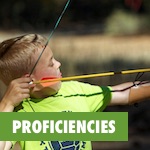 “Oh yay. I was like: yay, my heart.”
“Oh yay. I was like: yay, my heart.”
This was Grace Gilmour’s response to a student’s honest appraisal of her class: “I love it in here because I always feel like I know the next steps on the road to improving.”
Grace teaches social studies to 7th and 8th graders at Crossett Brook Middle School in Duxbury, Vermont. Like teachers across the state, she has been working hard to implement proficiency based learning in her classroom.
If you ask her how it’s going, Grace will likely smile and whisper, “it’s working.”
Eight elements to make proficiencies work
After learning from Grace for a couple of years and interviewing her recently, I can distill eight aspects of her successful proficiency-based classroom:
- Focus on a few proficiencies only
- Teach students how to give feedback
- Craft learning scales for clarity
- Introduce new skills with immediate application
- Give varied opportunities for practice
- Provide differentiated support
- Use visuals for coherence
- Create smart summative assessments
All of these pieces come together to support a feedback-rich environment that promotes a growth mindset and deep learning. Let’s look at each element in turn.
1. Focus on a few proficiencies only
Grace starts by planning the proficiencies she’s going to tackle during the school year. She stresses a “less is more” approach.
“Don’t pick too many targets. And don’t feel the need to assess everything important. …I’m not going to be explicitly assessing collaboration this year, but I am teaching my kids how to collaborate with each other every single day of their lives. So, just because you’re supporting them and working with them on something doesn’t mean you have to assess it.”
Grace focuses on 6-10 skill-based targets for an entire school year. She assigns each target an icon to serve as a visual cue. (See #7 below for how she uses the icons and other visuals.)
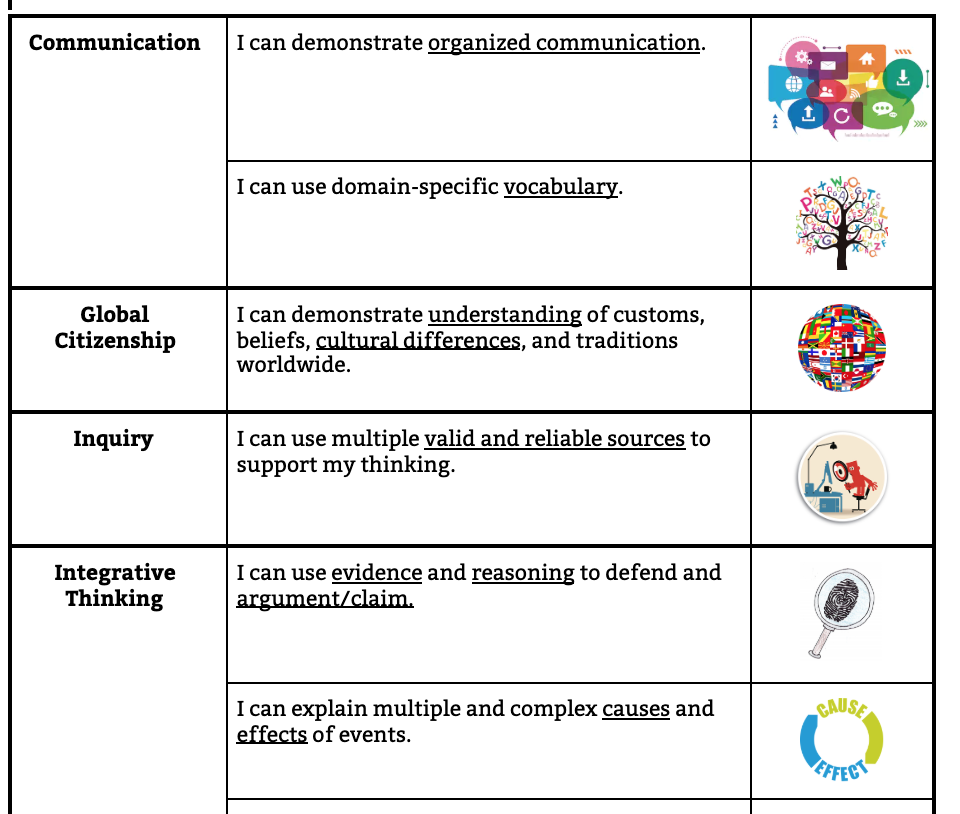
2. Teach students how to give feedback
At the beginning of the year, Grace explicitly teaches students how to give good feedback.
“I asked them: what’s the best feedback you ever got? What’s the worst feedback you ever got? Making them acknowledge what they like in the feedback they get. And they came out with all of the research essentially in kid language. …They came up with actionable, they came up with timely, and telling them what they need to do right now to get better.”
By spending team teaching students how to give good feedback, Grace amplifies her impact and makes a feedback rich environment manageable. “It certainly sounded overwhelming for me when I was reading over the literature and I’m like, how am I supposed to do this and still take care of myself and have a life outside of school? Finding those little tricks for yourself, like self-assessment or peer assessment, is huge.”
3. Craft learning scales for clarity
Clear expectations allow feedback systems to thrive.
As Grace puts it, “What’s making it successful now is the idea of transparency. So, I’m making it really clear what skills we are working on and having the kids know exactly what it is that we’re working on and why we’re working on it.
Grace breaks down the district-wide learning scales into sub-skills organized by performance category.
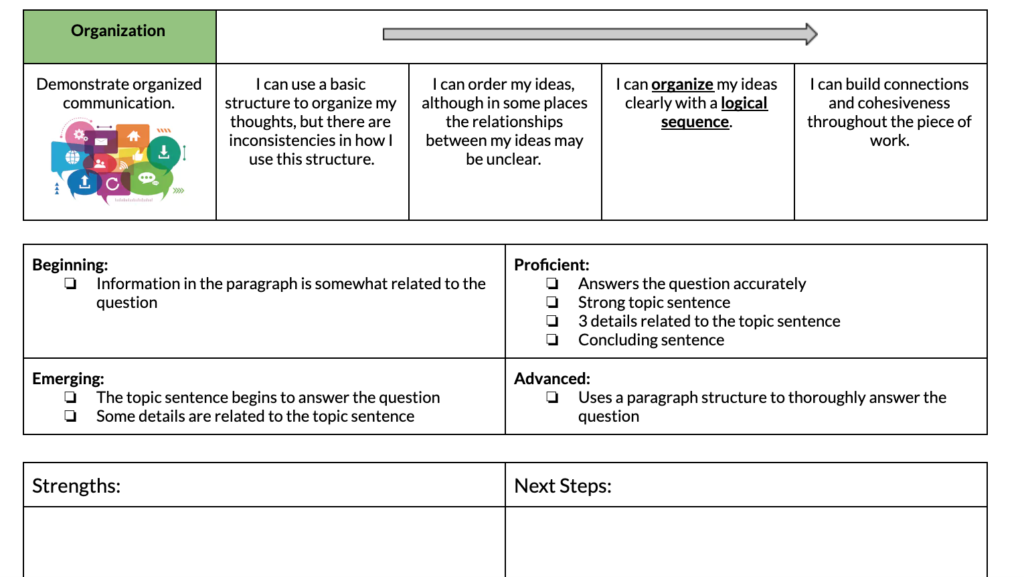
All formative and summative assessments reference the scale, the sub-skills, and include narrative descriptions of both strengths and next steps. The narrative is crucial because it goes beyond the scale and personalizes the feedback for each student based on the task at hand.
4. Introduce new skills with immediate application
Grace defines transparency as understanding both the what and the why of a new skill.
Here is how she recently introduced the learning target of writing a strong paragraph (“organized communication”):
- Students brainstormed what makes a good paragraph.
- Grace provided direct instruction on what makes a good paragraph, connecting to the ideas that students brought up during the brainstorm.
- Grace introduced the learning scale and walked through a paragraph that modeled proficiency.
- Students practiced writing a paragraph based on content they were already familiar with. In this case each student wrote a paragraph about the African country that they had been studying.
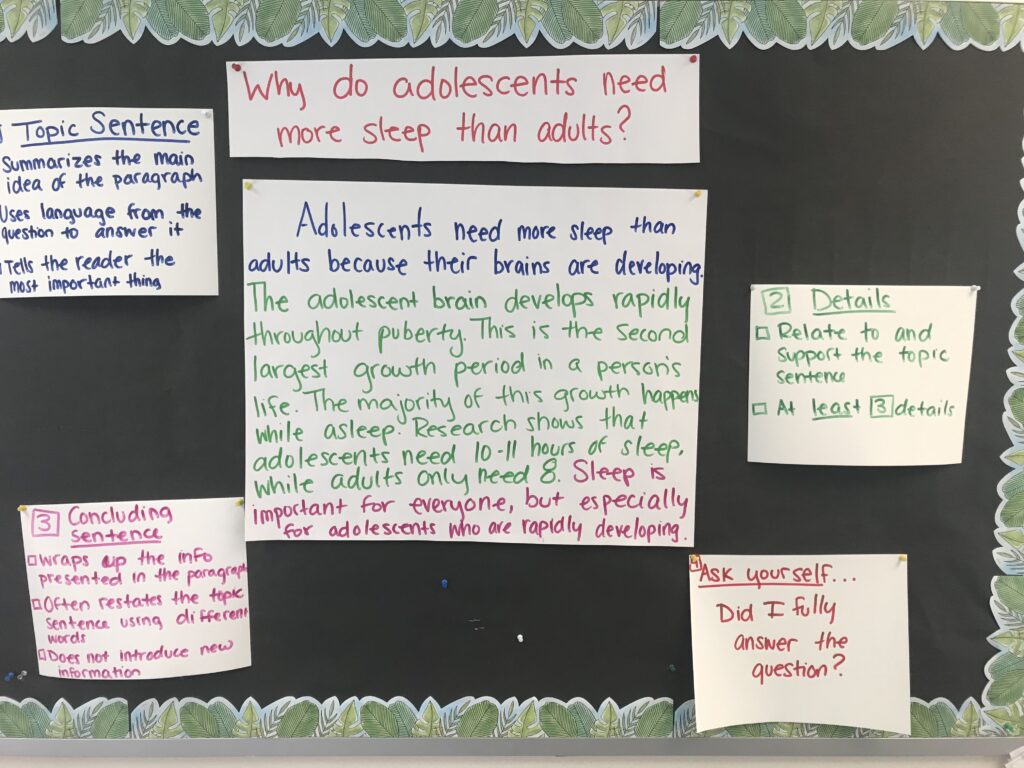
As Grace notes, “I find getting them to practice right away with stuff and having them give each other feedback right off the bat is a really great way to just to get them to interact with it.”
On day two, students took turns giving or receiving feedback on their paragraph. They circulated through stations to get peer feedback on their topic sentence, then their body, then their conclusion.
5. Give varied opportunities for practice
Grace credits this blog post about practice in a proficiency-based environment as helping her understand that practice does not have to be boring.
“I think sometimes when people hear practice they think of rote practice. ‘Here’s a question. Write a paragraph. Here’s a question. Write a paragraph.’ And I think that that is going to get boring really quick for the kids and you’re going to lose them and it’s not going to be super helpful.”
So she makes sure to mix it up. “Kids need different kinds of cognitive tasks, right? I mean, ‘right now, we’re picking topic sentences. Now we’re going to talk about our topic sentences. Let’s now rewrite another paragraph that’s already been made. Now we’re going to go to different feedback stations and walk around the room and do that and talk to different people about our work.”
Notice how she varies both the modalities and the grain size of the learning expectation. At times students focus on one small aspect of paragraph writing, at other times the entire paragraph, and in other instances they use paragraphs in longer written pieces.
Similarly, at times students write about content that is at the heart of the colonization unit. But other times they are practicing based on something closer to their lived experience, such as school start times or popular music.
6. Provide differentiated support
Grace offers graphic organizers and other scaffolds. She creates several levels of support and students choose what they need.
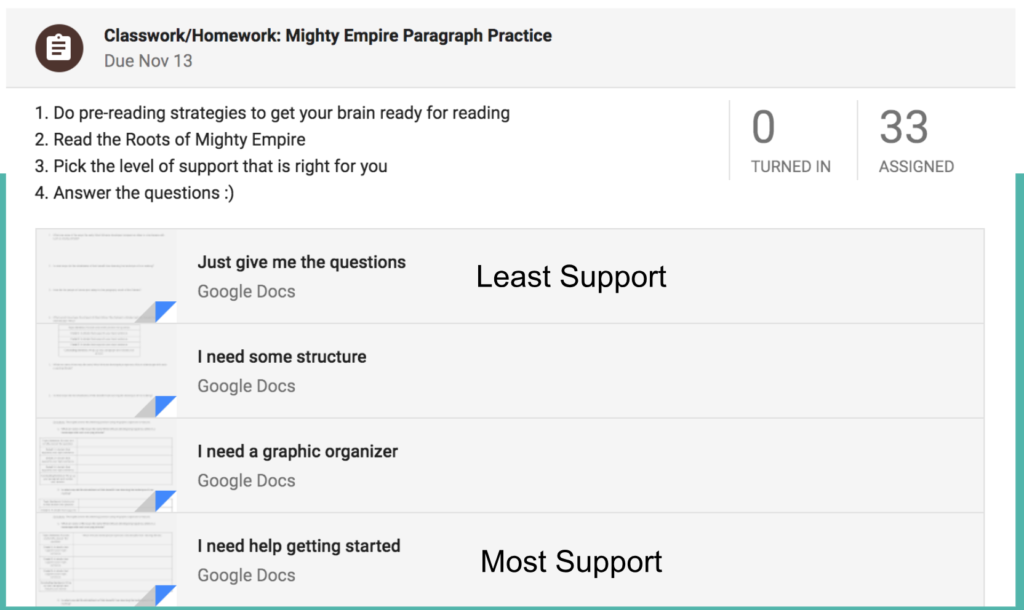
“I really let them self-select where they think they are and I generally find that kids pick accurately. I think that often times people’s concern with doing things like that, they’re like, ‘Oh, the kid’s going to pick the easiest one automatically.’ And I haven’t found that to be the case. My kids haven’t done that.”
7. Use visuals for coherence
Grace employs visual cues and color in several ways within her proficiency-based classroom.
She uses learning scales on her walls to demarcate the status of the class vis a vis the learning progression. At the beginning of a unit, for example, students may need reminded that they are only at an early stage of the progression. Or a skill like domain-specific vocabulary may “reset” at the beginning of each unit as students are encountering new academic language. Grace makes sure students know what “on track” means at any given time.
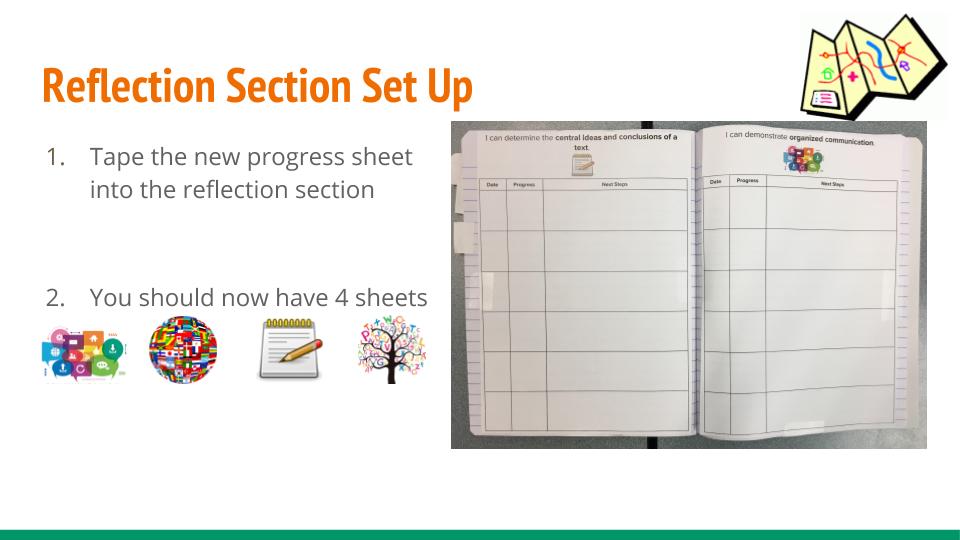
As mentioned above, Grace also assigns icons to each proficiency. This provides a mnemonic anchor for students to track that skill as it comes up in multiple units throughout the year. Grace’s team mates use the same icons so that students can recognize the Transferable Skills as they are learned and applied in different content areas.
Students use their reflection journals to take notes after each practice opportunity. This creates a running log of formative feedback in the student’s own words organized by skill. Each entry is color coded in a consistent way.
Grace uses visuals strategically:
“We do a lot of color coding and use a lot of symbols. I think humans just like color. I think particularly for middle school. Executive functioning skills are not their strong suit in general and I think the color coding and the visuals really help them to make connections. … And then even when I’m giving them feedback on their little sheets. I do it in color so I just carry markers around when I’m doing feedback so they can see the color.”
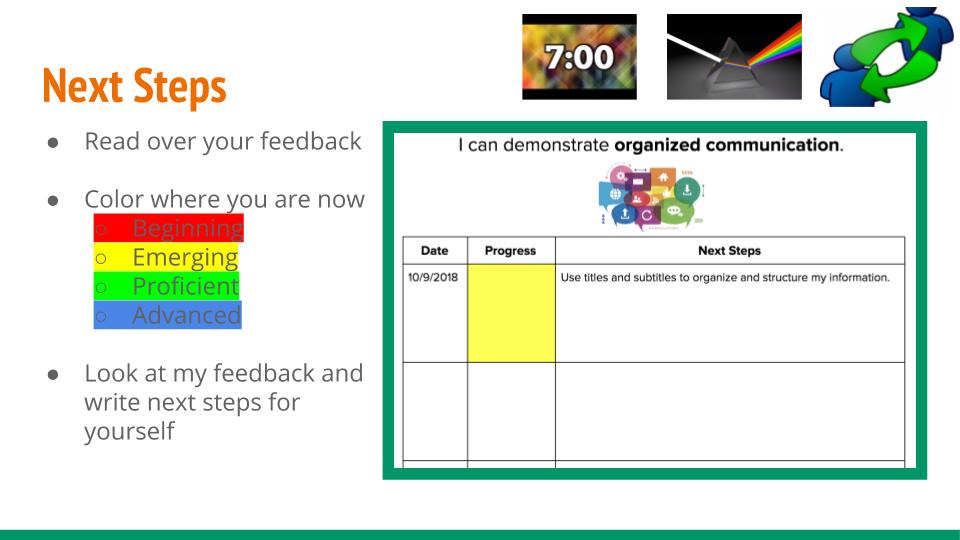
8. Create smart summative assessments
Although some assessments are larger projects that integrate multiple skills, Grace has increased the number of summative assessments that address singular, discrete skills.
She’s changed the way that she utilizes summative assessment.
“This has been something that I’ve shifted since last year from feedback based from kids. I feel like last year I was almost like so focused on making sure that they had so much practice that I knew they were all going to be able to do it. I feel like I gave less summatives as a result and I made them really high stakes. … So, this year I’ve been doing a lot of smaller summatives that are focusing on just one skill and that’s been working really, really well. Because I feel like they’re getting more chances throughout the year to show their skills.”
For example, the first summative assessment on paragraph writing came after just a couple of weeks after it was introduced. The content was based on the African country that each student had chosen to study as part of the larger colonization unit. Students were even allowed to see the questions beforehand and bring in notes, so that Grace knew she was assessing the specific skill.
After each summative assessment, students have two weeks to resubmit work to boost their proficiency score. Students must attach Grace’s feedback to their new work along with the resubmission form where they indicate the proficiencies for which they would like to be reassessed.
Like everything else in her classroom, the summative assessment process is oriented toward growth. “Regardless of if you resubmit this or if we’re going back to it later on, the next steps piece needs to be helpful for them with this skill in general, right?”
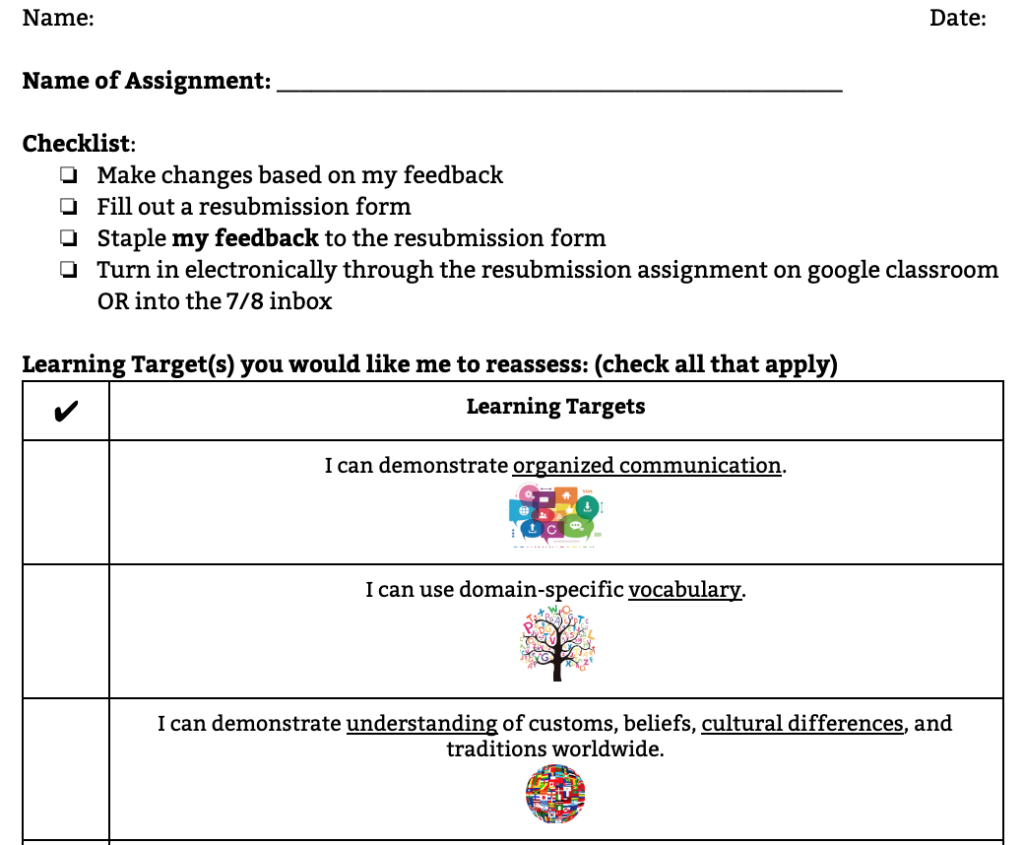
It’s working
Proficiency based learning is a monumental shift. By partnering with her students to create a feedback-rich environment, Grace feels like she is moving toward a sustainable balance.
And she feels that Transferable Skills are the right focus.
“Cognitively middle schoolers, their working memory is across the board. Emotional turmoil tends to wipe out all their working memory. If you were to ask most adults what they remember from Middle School, it’s their social life. I remember my social life and I remember my teachers, but I honestly don’t remember that much of the content. I don’t think that’s because I had bad teachers. It’s just because I was in middle school. So, if I can get my kids to walk away with some really strong skills, I’m super happy. Some larger takeaways about the world and where they are in it. Caring about other people, I’m happy. I don’t know, but it’s definitely a shift. It’s definitely completely different from how I was taught.”
It is indeed a shift, for both teachers and students. But Grace has noticed something changing.
“I’ve noticed more students just getting excited about school or wanting to work towards being better at a skill just for the sake of it. Like a kid being like, ‘Hey, am I on the right track?’ Or like, ‘I’m feeling really good about this. Can you take a look at it?’ Actively seeking out feedback from me and from their peers in a way that I did not see before. The conversation is becoming less, ‘what do I need to do in order to be advanced?’ and more just like, ‘what’s my next step?’ Hearing that shift in language has been really heartening and exciting and yeah, it’s been great.”
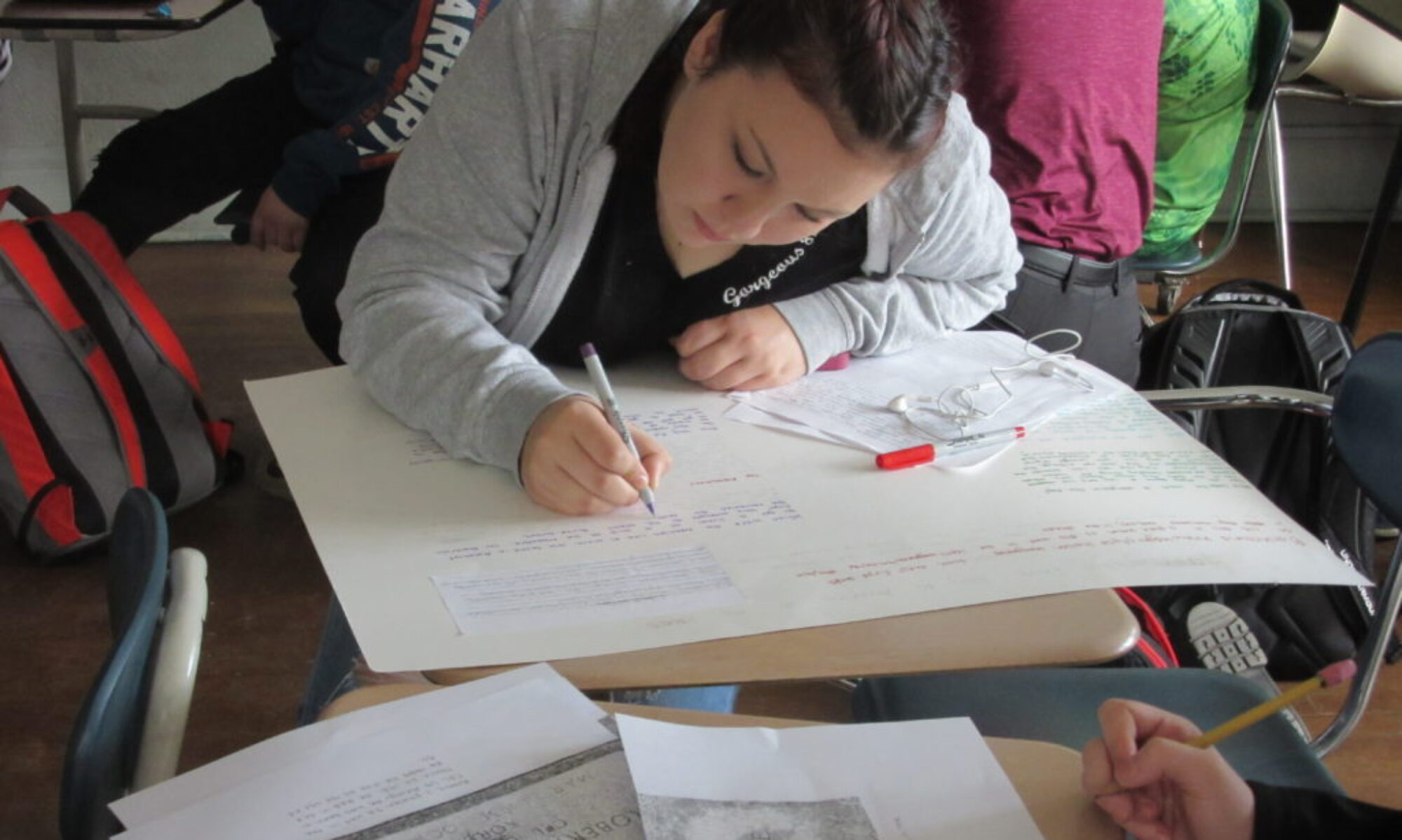

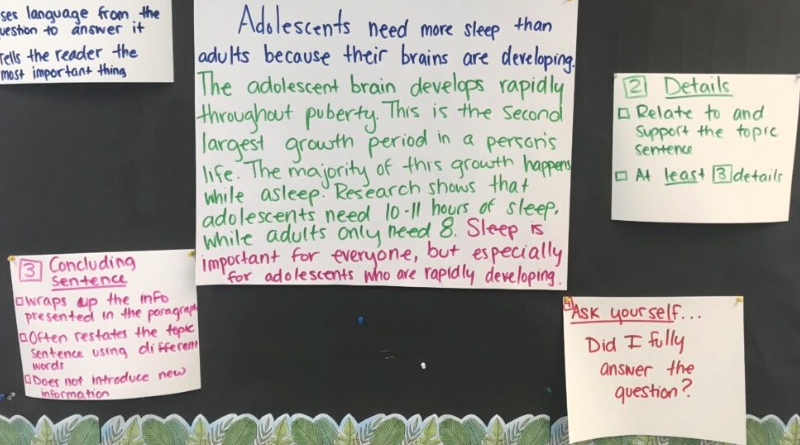
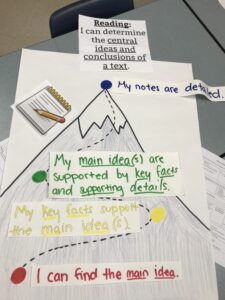

This is a teaching approach with significant insight. Learning skills that support themselves through ingrained recognition can direct responses based on logical assessment without relying on a potentially flawed initial interpretation. Repetition endorses the ideas which, in turn, graduate from foundational to behavioral. This not only minimizes boredom, but can encourage transitional and creative thinking. It would seem that carefully monitored progress evaluations are as critical as the teaching method itself! In other words, the student is only as good as the instructor and careful management is essential.
Great ideas!!!
Dr. Paul Skomsky
Thank you so much for your thoughtful response. I am especially interested in your comment that “This not only minimizes boredom, but can encourage transitional and creative thinking.” I think there is something special in this teacher’s approach in that she reconceptualizes “practice” as something that can be varied, creative, and I daresay fun. It appears that you have some background in learning science and I would be interested in hearing more of your thoughts. Please email me at lifelegeros@gmail.com if you would like to deepen the conversation offline. Or we can keep it going within this comments thread!
I am particularly curious about your thoughts on transitioning from novice to expert in transferable skills that vary so greatly depending on their application and context. For example, proficiency in scientific modeling varies greatly depending on the concept/phenomenon you are trying to model.